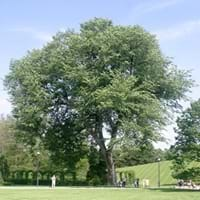Life Span
Perennial
Perennial
Type
Flowering Plants
Tree
Origin
Mediterranean, North Africa, Northern America
North America
Types
Anthony Peak Lupine, Silver Bush, Garden Lupine, Spider Lupine, Adonis Lupine
Water elm
Number of Varieties
Not Available
Habitat
Pine barrens, Sandy areas
Floodplains, Hillside, stream banks, Swamps, Upland
USDA Hardiness Zone
3-7
3-9
Sunset Zone
1a, 1b, 2a, 2b, 3a, 3b, 4, 5, 6, 7, 14, 15, 16, 17
1a, 1b, 2a, 2b, 3a, 3b, 4, 5, 6, 7, 8, 9, 10, 11, 14, 15, 16, 17, 18, 19, 20, 21
Habit
Upright/Erect
Upright/Erect
Flower Color
Blue, Pink, White
Green
Flower Color Modifier
Not Available
Bicolor
Fruit Color
Not Available
Tan
Leaf Color in Spring
Light Green
Light Green
Leaf Color in Summer
Green
Dark Green
Leaf Color in Fall
Green
Light Yellow
Leaf Color in Winter
Not Available
Not Available
Leaf Shape
Oblovate
Oblique base
Plant Season
Summer
Spring, Summer, Fall, Winter
Sunlight
Full Sun, Part sun
Full Sun
Type of Soil
Loose, Moist
Loam
The pH of Soil
Slightly Acidic
Acidic, Neutral
Soil Drainage
Well drained
Average
Bloom Time
Late Spring, Summer
Early Spring
Tolerances
Not Available
Cold climate, Drought, Pollution, Salt
Where to Plant?
Ground
Ground
How to Plant?
Seedlings
Rooted stem cutting, Seedlings, Stem Planting
Plant Maintenance
Medium
Low
Watering Requirements
Form a Soil ring to water efficiently, Keep the ground moist but not water-logged, Requires a lot of watering, Water in morning to avoid prompting diseases
Average Water Needs, Requires regular watering, Requires watering in the growing season, Water Deeply
In Summer
Lots of watering
Ample Water
In Spring
Moderate
Average Water
In Winter
Average Water
Average Water
Soil pH
Slightly Acidic
Acidic, Neutral
Soil Type
Loose, Moist
Loam
Soil Drainage Capacity
Well drained
Average
Sun Exposure
Full Sun, Part sun
Full Sun
Pruning
Prune ocassionally
Remove dead branches, Remove dead or diseased plant parts, Remove hanging branches
Fertilizers
All-Purpose Liquid Fertilizer
Fertilize every year, fertilize in growing season, Nitrogen, Phosphorous, Potassium
Pests and Diseases
Aphids, Fusarium wilt, Root rot, Thripes
Bark beetles, Beetles, Borers, Mites, Moth, Red blotch, Scale
Plant Tolerance
Drought
Cold climate, Drought, Salt
Flowers
Yes
Insignificant
Flower Petal Number
Single
Single
Foliage Texture
Medium
Medium
Foliage Sheen
Matte
Matte
Attracts
Bees
Not Available
Allergy
Abdominal pain, Asthma, Nausea, Swelling in the face, Vomiting
allergic reaction, Asthma
Aesthetic Uses
Showy Purposes
Landscape Designing
Beauty Benefits
Not Available
No Beauty Benefits
Environmental Uses
Air purification
Absorbs greenhouse gases, Absorbs huge amounts of CO2, Air purification, Food for birds, Forms dense stands, Nesting sites for birds, Prevent Soil Erosion, Shelter for wildlife, Wildlife
Medicinal Uses
Anthelmintic, Diuretic, Treatment of ulcers
Antispasmodic, Astringent
Part of Plant Used
Flowers, Seeds
Bark, Stem, Tree trunks, Wood
Other Uses
Showy Purposes, Used as Ornamental plant, Used for fragrance
Used as firewood, Used for woodware, Used in biomass, Used in construction, Used in Furniture, Used in paper industry, Used in pulpwood and lumber production, Wood is used for making furniture, Wood is used for ship building, Wood is used fore making tools, Wood is used in construction, Wood log is used in making fences
Used As Indoor Plant
No
No
Used As Outdoor Plant
Yes
Yes
Garden Design
Bedding Plant, Container, Feature Plant, Foundation, Rock Garden
Feature Plant, Shade Trees, Street Trees
Botanical Name
Lupinus
ULMUS americana
Common Name
Hybrid Lupine
American Elm
In Hindi
वृक संयंत्र
अमेरिकी एल्म
In German
lupine
amerikanische Ulme
In French
usine de lupin
orme d'Amérique
In Spanish
planta de lupino
olmo americano
In Greek
φυτό λούπινο
American Elm
In Portuguese
tremoço planta
olmo americano
In Polish
łubin roślin
Amerykański wiązu
In Latin
Plinio herba
Latin ulmo
Phylum
Magnoliophyta
Magnoliophyta
Class
Magnoliopsida
Magnoliopsida
Clade
Not Available
Angiosperms, Eudicots, Rosids
Tribe
Not Available
Not Available
Subfamily
Faboideae
Not Available
Importance of Lupine and Elm
Want to have the most appropriate plant for your garden? You might want to know the importance of Lupine and Elm. Basically, these two plants vary in many aspects. Compare Lupine and Elm as they differ in many characteristics such as their life, care, benefits, facts, etc. Every gardener must at least have the slightest clue about the plants he wants to plant in his garden. Compare their benefits, which differ in many ways like facts and uses. The medicinal use of Lupine is Anthelmintic, Diuretic and Treatment of ulcers whereas of Elm is Antispasmodic and Astringent. Lupine has beauty benefits as follows: Not Available while Elm has beauty benefits as follows: Not Available.
Compare Facts of Lupine vs Elm
How to choose the best garden plant for your garden depending upon its facts? Here garden plant comparison will help you to solve this query. Compare the facts of Lupine vs Elm and know which one to choose. As garden plants have benefits and other uses, allergy is also a major drawback of plants for some people. Allergic reactions of Lupine are Abdominal pain, Asthma, Nausea, Swelling in the face and Vomiting whereas of Elm have allergic reaction and Asthma respectively. Having a fruit bearing plant in your garden can be a plus point of your garden. Lupine has no showy fruits and Elm has no showy fruits. Also Lupine is flowering and Elm is not flowering . You can compare Lupine and Elm facts and facts of other plants too.





